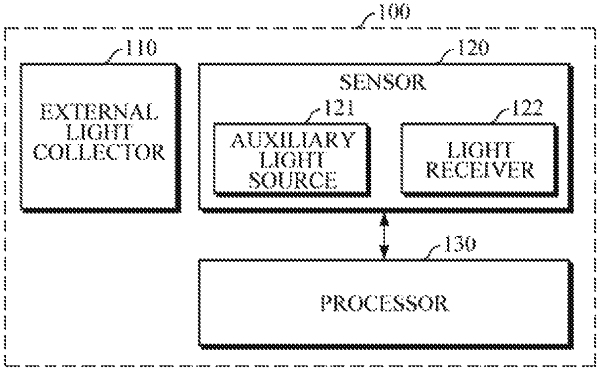| CPC A61B 5/0205 (2013.01) [A61B 5/0002 (2013.01); A61B 5/0077 (2013.01); A61B 5/02007 (2013.01); A61B 5/02416 (2013.01); A61B 5/165 (2013.01); A61B 5/681 (2013.01); A61B 5/6803 (2013.01); A61B 2560/0214 (2013.01)] | 24 Claims |

|
1. A wearable device, comprising:
an external light collector configured to collect external light;
a sensor comprising an auxiliary light source and a light receiver, the sensor being configured to measure a bio-signal of a user; and
a processor configured to determine whether the external light is sufficient to measure the bio-signal, and to control driving of the auxiliary light source based on the determination,
wherein the processor is configured to extract a frequency component by filtering the bio-signal measured using only the external light when the auxiliary light source is turned off at an early stage of measurement of the bio-signal, and to determine whether the external light is sufficient to measure the bio-signal based on an amplitude of the extracted frequency component.
|